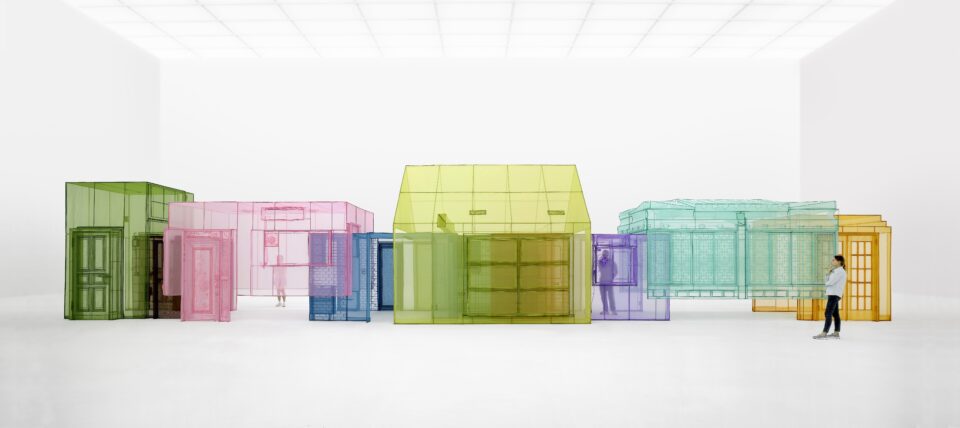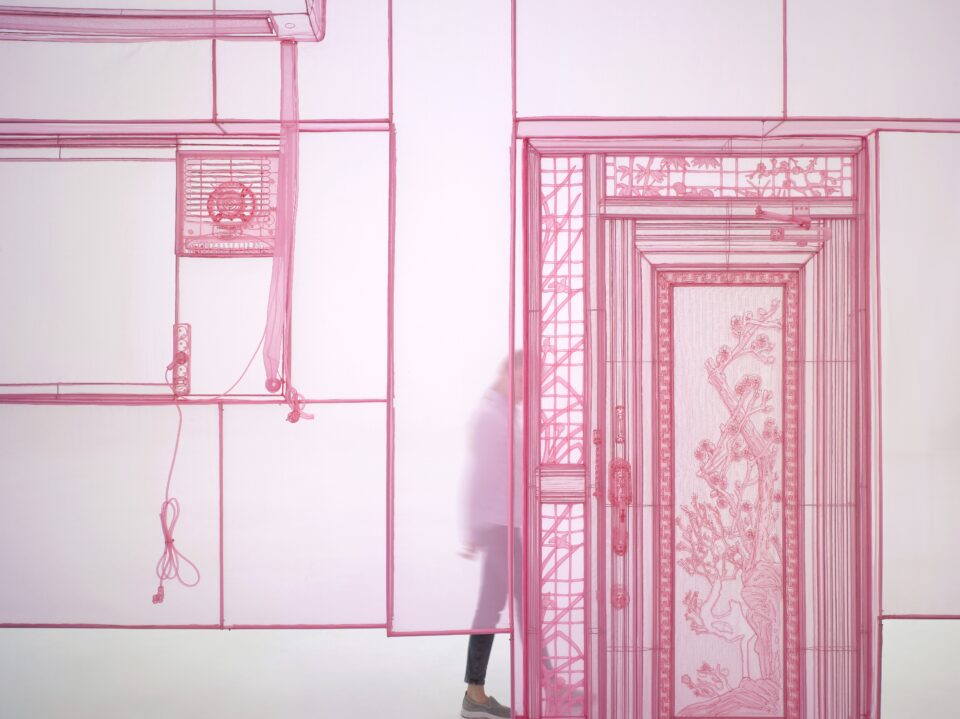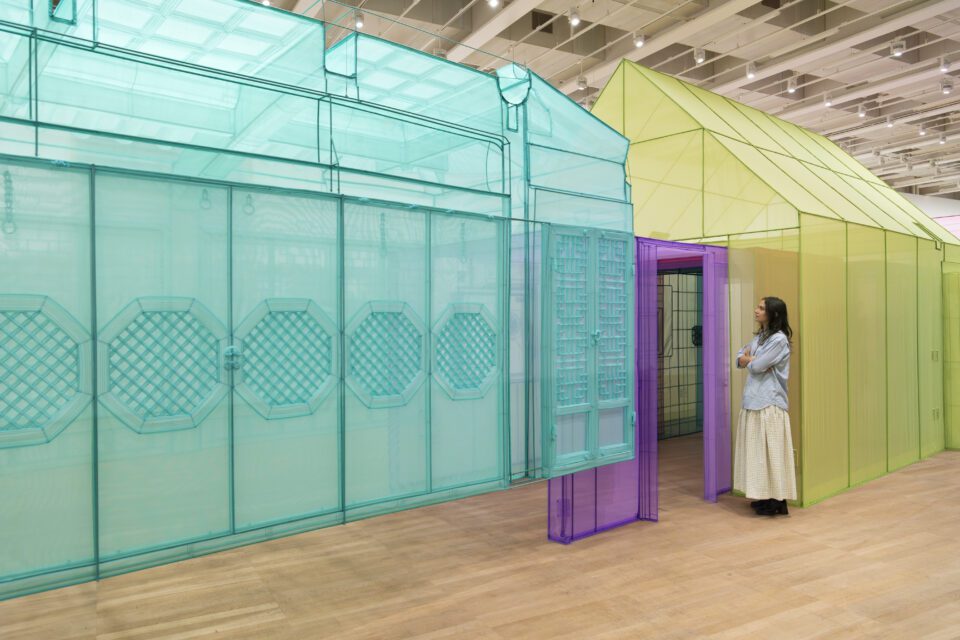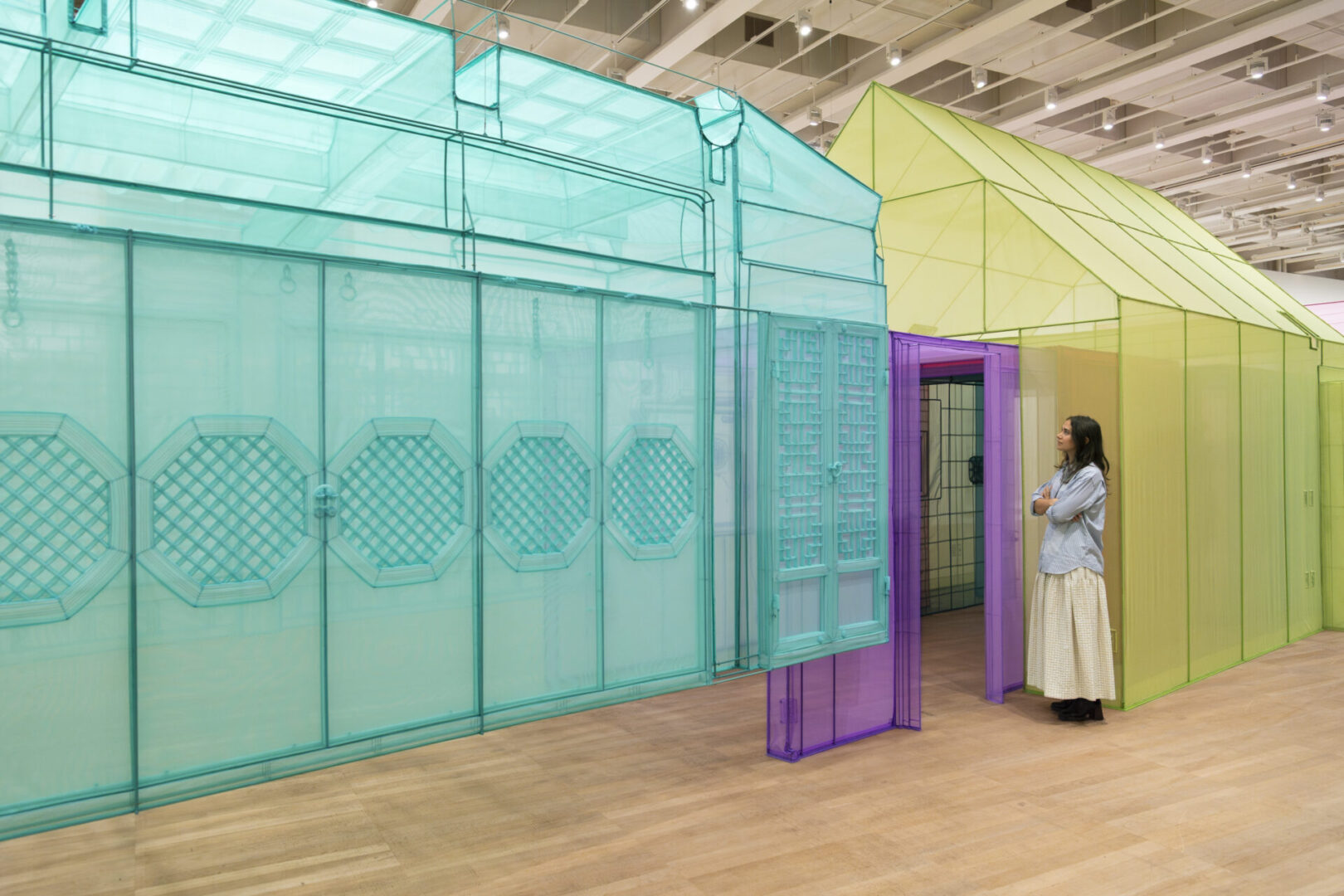Celebrated writer and civil rights activist James Baldwin (1924 – 1987) wrote: “You take your home with you. Otherwise, you’re homeless.” The American creative was born in Harlem, New York but spent much of his life in France. It remains is a sentiment relevant to millions of people across the world today, who emigrate for work, family ties and new opportunities or are displaced by conflict and environmental disaster. They take their home with them. Now, a new major exhibition of Do Ho Suh’s (b. 1962) work at Tate Modern echoes Baldwin’s powerful statement. The Korean-born, London-based artist has dedicated his career to the question: is home a place, an idea or a feeling? This poignant, decades-long enquiry has seen Suh become one of the most renowned artists working today. His acclaim includes having represented Korea at the 49th Venice Biennale in 2001 and receive the 2017 Ho-Am Prize in the Arts. Now, Tate invites visitors to step into this creative legacy.
The display presents the breadth and depth of Suh’s unique practice over the last three decades, spanning locations including Seoul, New York and London. The artist is best known for making large-scale, temporary translucent fabric sculptures of his former homes. The work on display at Tate includes large-scale installation, sculpture, videos and drawings, asking questions about the enigma of home and identity. Walk the House takes its title from the Korean expression referring to the “hanok”, a structure that could theoretically be disassembled, transported and rebuilt at a new site. Not only does this idea tap into a feeling of ephemerality that runs throughout the show, but also comes from Suh’s memories of his father building a hanok. Suh left South Korea for New York in 1991, and the experience of a life left behind, and the painstaking building of a new one, is the cornerstone of this profound and intimate exhibition.

Suh has called the personal aspects of his artworks “incidental”, but the influence of his transient life is undeniable throughout Walk the House. The show includes the first presentation of Perfect Home: London, Horsham, New York, Berlin, Providence, Seoul (2024). The piece is an outline of Suh’s present home in London, filled with brightly coloured architectural features, including doorknobs, light switches and electrical sockets, that playfully trace the domestic spaces of the artist and his family. Particularly introspective is Rubbing/Loving Project: Seoul Home (2013 – 2022), which is an exploration of traditional Korean rubbing practices. The work began with the artist covering the entire internal structure of his home in paper, covering the layer with graphite to produce its impressions in two-dimensions. The artist explains: “A lot came into focus for me when I left Korea … I was thinking anew about the impact movement has on the body and your sense of self. When I arrived in the USA, I found myself doing two things, both of which relate to the idea of architecture as clothing: I began to measure my space, and I produced paper rubbings of the interior. It was a response to my sense of displacement and disorientation.” The work is a physical manifestation of something so many would like to do: take a litter; imprint of their house as they move.

The artist’s oeuvre may have its core in his own experience, but Suh manages to avoid feeling insular or exclusionary. There is a recognition that to leave home behind is an experience to which others can relate. Visitors are invited into his world, welcome to fill the works both physically, with their presence, and psychologically, with their inner realities. One key piece is Who Am We? (2000), a mosaic of tens of thousands of tiny portrait photographs collected from sources including school yearbooks. It is an early example of the artist’s reflections on individual and collective identity. The wallpaper features cut-out images so small that it’s difficult to make out the faces without moving closer, taking the time to focus on each person at a time. In an interview with the Guardian, Suh explained: “I reduced the size so that people’s individuality began to blend, but you could still see the differences. In a way, I was challenging people’s ability to see these differences, especially when it comes to Asian people.” Here, Suh expands his perspective, acknowledging the experiences of diasporic communities. It is a poignant moment in the show and a vital recognition of the systematic difficulties that come with moving locations.

Home, as a concept, transcends the philosophical and is also deeply political. According to the United Nations, as of June 2024, there are an estimated 122.6 million people around the world who have been forced to flee their homes. Among them are 43.7 refugees and 4.4 million who are officially “stateless.” Catastrophic global occurrences like the genocide in Palestine and recent Myanmar earthquake are reminders that spaces where people build their lives are not guaranteed, but remain vulnerable to conflict, climate change and international affairs. The inauguration of Donald Trump’s second term as US President at the start of 2025 brought in huge changes to immigration laws, which have seen the notion of citizenship enter public debate. The hard-lines policies mean even those with green-cards and visas have been forcibly removed to detention centres. Tate’s exhibition culminates in The Bridge Project, a work that sees Suh address these topics. It forms just one chapter of Suh’s acclaimed A Perfect Home series and imagines four bridges which connect Seoul, South Korea and New York City. Created alongside a team of researchers, architects and designers, the conceptual piece grapples with problems of climate, biodiversity and human activity. Each design factors in specific environmental data, such as ocean current, tide, wind, waves, sea levels and natural disasters, as well as political conditions like missile testing and the movements of people.
In Walk the House, Suh takes one of the most important things in everyone’s life – a home – and carefully deconstructs it. Viewers are confronted with questions of identity, belonging, place and how to inhabit the world. Suh guides audiences from quiet moments of reflection, like rubbings of his own home, to international politics. There is a dizzying breadth of ideas and work on display, but the show never loses the personal touch that makes it so remarkable. In baring his history, experience and emotional connection to certain locations, Suh is a voice for all those who have had to “take their home with them.”
The Genesis Exhibition: Do Ho Suh: Walk the House is at Tate Modern 1 May – 19 October 2025: Tate.org
Read Aesthetica’s interview with the artist here.
Words: Emma Jacob
Image credits:
2. Do Ho Suh. Nest/s, 2024. Polyester, stainless steel 410.1 x 375.4 x 2148.7 cm. Courtesy the Artist and Lehmann Maupin New York, Seoul and London and Victoria Miro. Photography by Jeon Taeg Su© Do Ho Suh.
3. Do Ho Suh. Nest/s, 2024 (detail) Polyester, stainless steel 410.1 x 375.4 x 2148.7 cm. Courtesy the Artist and Lehmann Maupin New York, Seoul and London and Victoria Miro. Photography by Jeon Taeg Su© Do Ho Suh.
1&4. Do Ho Suh,Nest/s, 2024, installation view, TheGenesis Exhibition: Do Ho Suh: Walk theHouse.Courtesy the Artist, Lehmann Maupin New York, Seoul and London and VictoriaMiro. Creation supported by Genesis © Do Ho Suh. Photo © Tate (Jai Monaghan).





